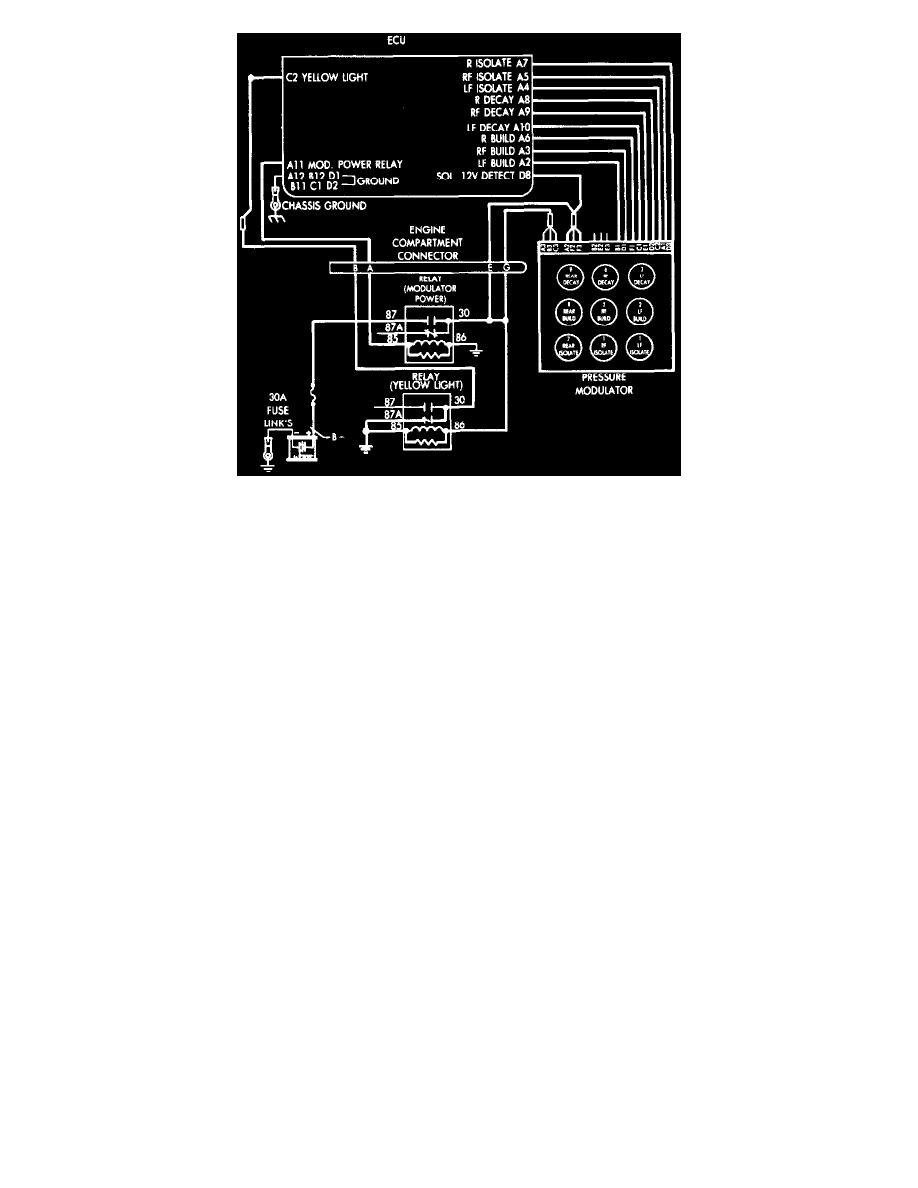Wagoneer L6-242 4.0L VIN M FI (1988)

Fig. 22 - ECU & Modulator Circuitry
PRESSURE MODULATOR
The pressure modulator is a hydro-electric component and is attached to the master cylinder/power booster assembly. It provides three channel
pressure control to the front and rear brakes. One channel controls the rear wheel brakes in tandem. The two remaining channels control the front
wheel brakes individually.
The modulator contains a total of nine solenoid valves. Three solenoid valves (isolation, decay, and build) are assigned to each control channel
(fig. 21). The three solenoid valves in each control channel have separate functions and are electrically controlled by the anti-lock Electronic
Control Unit (ECU) during anti-lock operation (fig. 22).
The Isolation solenoid valves isolate the master cylinder line pressure from a caliper or wheel cylinder during anti-lock operation. During normal
brake operation master cylinder pressure passes through the isolation valve to the wheel brakes. During anti-lock mode the isolation solenoid
valves block the master cylinder ports. Pressure at the wheels is modulated through the build and decay solenoid valves by the anti-lock ECU.
The Decay solenoid valves provide a controlled decrease (drop) in pressure to the wheel brakes when in anti-lock mode operation.
The Build solenoid valves provide controlled pressure build (increase) to the wheel brakes when in anti-lock mode operation.
The anti-lock ECU controls all modulation of these solenoid valves during anti-lock braking. Basically what happens is that the ECU receives
wheel speed information from the wheel speed sensors. When a particular wheel is slowing too much or starting to lock, the ECU activates the
isolation solenoid valve to prevent further increase in brake pressure. The isolation solenoid valves block fluid pressure from the master cylinder
ports. This allows brake pressure to be modulated through the build and decay solenoid valves by the anti-lock ECU while isolating the pressure
modulation from the brake pedal.
The ECU activates the decay solenoid valve to drop brake pressure so the wheel can increase speed, preventing wheel lock-up and maintain
vehicle control.
When the ECU determines that the wheel speed has accelerated (returned to a predetermined speed), the build solenoid valve is activated to
increase brake pressure to that wheel to slow it down.
NOTE: All three channels operate independently. So, for example, one channel may have the build valve energized while another channel may
have the decay valve energized.
